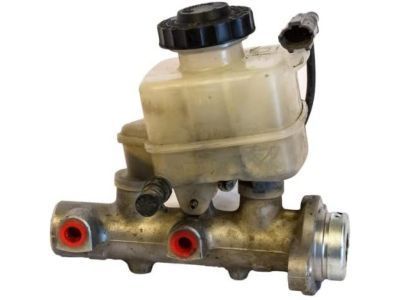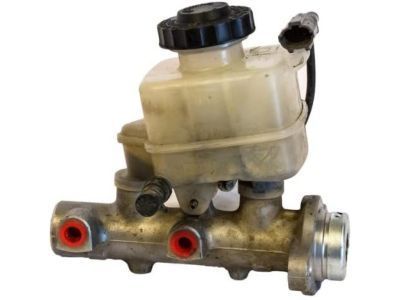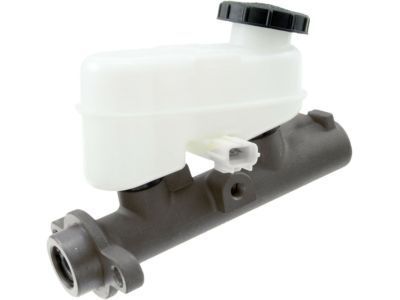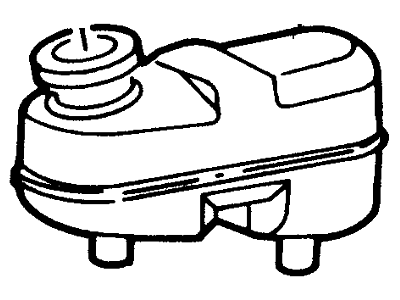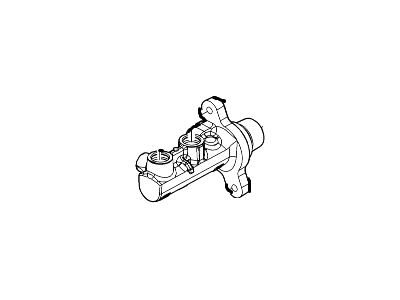×
- Live Chat
- 1-888-788-9341


My Garage
My Account
Cart
Genuine Ford Taurus Brake Master Cylinder
- Select Vehicle by Model
- Select Vehicle by VIN
Select Vehicle by Model
orMake
Model
Year
Select Vehicle by VIN
For the most accurate results, select vehicle by your VIN (Vehicle Identification Number).
14 Brake Master Cylinders found
Ford Taurus Cylinder Assembly - Master
Part Number: 8A8Z-2140-A$122.55 MSRP: $207.27You Save: $84.72 (41%)Ships in 1-2 Business DaysFord Taurus Kit - Master Cylinde
Part Number: DG1Z-2140-A$208.19 MSRP: $347.27You Save: $139.08 (41%)Ships in 1-2 Business DaysFord Taurus Kit - Master Cylinder Repair
Part Number: DG1Z-2140-B$208.19 MSRP: $347.27You Save: $139.08 (41%)Ships in 1-2 Business Days
Ford Taurus Brake Master Cylinder
The Brake Master Cylinder in the Ford Taurus automobile is another important assembly in the braking mechanism that changes the force exerted by feet into hydraulic pressure to the slave cylinders. This system employs a hydraulic fluid for the application of force from the master cylinder's piston to the slave cylinders and also maximizes force and displacement. Ford Taurus vehicles often come equipped with a dual circuit master cylinders with two pistons established predominantly to make sure that if there's hydraulic failure in one particular circuit, the other could offer adequate pressure to cease the vehicle. It is used for operating calipers or the drum brakes and this involves creating some sort of friction in the wheels to enable the stopping process to occur, the same cylinder is used to actuate the slave cylinder to enabling the cutting out process of the clutch. Due to control and application of hydraulic force and pressure distribution, the Brake Master Cylinder plays a very crucial role in the efficient and safe usage of the vehicles' braking and clutch facilities.
We provide a wide range of Ford Taurus Brake Master Cylinder at the best prices possible. If you need Ford Taurus Brake Master Cylinder, you can shop with confidence on our website. All our OEM parts come with a manufacturer's warranty and are delivered to your door step with a fast delivery service.
Ford Taurus Brake Master Cylinder Parts Questions & Experts Answers
- Q: How to remove and install a master cylinder in a Ford Taurus?A: The brake master cylinder is located in the engine compartment, mounted to the power Brake Booster. With the engine OFF, deplete the vacuum from the power brake booster by depressing the brake pedal several times. Remove the battery and the battery tray. Remove the air filter housing and intake duct. Remove as much fluid as you can from the reservoir with a syringe. Disconnect the electrical connector at the brake fluid level switch on the brake master cylinder reservoir. Place rags under the fluid fittings and prepare caps or plastic bags to cover the ends of the lines once they are disconnected. Loosen the fittings at the ends of the Brake Lines where they enter the brake master cylinder. Pull the brake lines slightly away from the brake master cylinder and plug the ends to prevent contamination. Remove and discard the nuts attaching the brake master cylinder to the power booster. Pull the brake master cylinder off the studs and out of the engine compartment along with the brake master cylinder-to-booster seal. If a new brake master cylinder is being installed, remove the reservoir from the old brake master cylinder and transfer it to the new brake master cylinder. Install new seals when transferring the reservoir. Bench bleed the new brake master cylinder before installing it. Mount the brake master cylinder in a vise, with the jaws of the vise clamping on the mounting flange. Attach a pair of brake master cylinder bleeder tubes to the outlet ports of the brake master cylinder. Fill the reservoir with brake fluid. Slowly push the pistons into the brake master cylinder to expel air from the pressure chambers and into the reservoir. Repeat the procedure until no more air bubbles are present. Remove the bleed tubes and install plugs in the open ports. Install the reservoir cap. Install the brake master cylinder over the studs on the power brake booster. Use new nuts and tighten them only finger tight at this time. Install a new seal into the sleeve of the brake master cylinder. Thread the brake line fittings into the brake master cylinder. Tighten the mounting nuts to the specified torque, then tighten the brake line fittings securely. Fill the brake master cylinder reservoir with fluid, then bleed the brake master cylinder and the brake system. To bleed the cylinder on the vehicle, have an assistant depress the brake pedal and hold the pedal to the floor. Loosen the fitting to allow air and fluid to escape. Repeat this procedure on both fittings until the fluid is clear of air bubbles. Test the operation of the brake system carefully before placing the vehicle into normal service.
Related Ford Taurus Parts
Browse by Year
2019 Brake Master Cylinder 2018 Brake Master Cylinder 2017 Brake Master Cylinder 2016 Brake Master Cylinder 2015 Brake Master Cylinder 2014 Brake Master Cylinder 2013 Brake Master Cylinder 2012 Brake Master Cylinder 2011 Brake Master Cylinder 2010 Brake Master Cylinder 2009 Brake Master Cylinder 2008 Brake Master Cylinder 2007 Brake Master Cylinder 2006 Brake Master Cylinder 2005 Brake Master Cylinder 2004 Brake Master Cylinder 2003 Brake Master Cylinder 2002 Brake Master Cylinder 2001 Brake Master Cylinder 2000 Brake Master Cylinder 1999 Brake Master Cylinder 1998 Brake Master Cylinder 1997 Brake Master Cylinder 1995 Brake Master Cylinder 1994 Brake Master Cylinder 1993 Brake Master Cylinder 1992 Brake Master Cylinder 1991 Brake Master Cylinder 1990 Brake Master Cylinder
